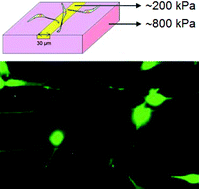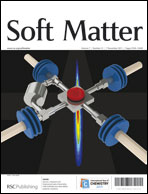This paper describes the influence of localized substrate stiffness on neural responses (e.g., neurite outgrowth and its path) in neuroblasts. To address this issue, we created a method to control the microenvironment of extracellular matrix compliances by generating a polymer matrix with alternating elasticities that interacted with neurons. We fabricated poly(dimethylsiloxane) channels comprised of localized surfaces with elastic moduli of 800 kPa and 200 kPa adjacent to one another. We then seeded and differentiated neuroblasts, and found that their processes exhibited distinct patterns as they approached and crossed the elastically defined interfaces of the multi-compliance polymer composite. Depending on the location of the soma and the direction of the outgrowth when compared to the elasticity interface, the outgrowths would extend forward in distinct paths including turning back, aligning along, or crossing the elasticity interface boundary. These results indicate that localized substrate elasticity has profound effects on neurite outgrowth in differentiating neuroblasts.

You have access to this article
 Please wait while we load your content...
Something went wrong. Try again?
Please wait while we load your content...
Something went wrong. Try again?


 Please wait while we load your content...
Please wait while we load your content...